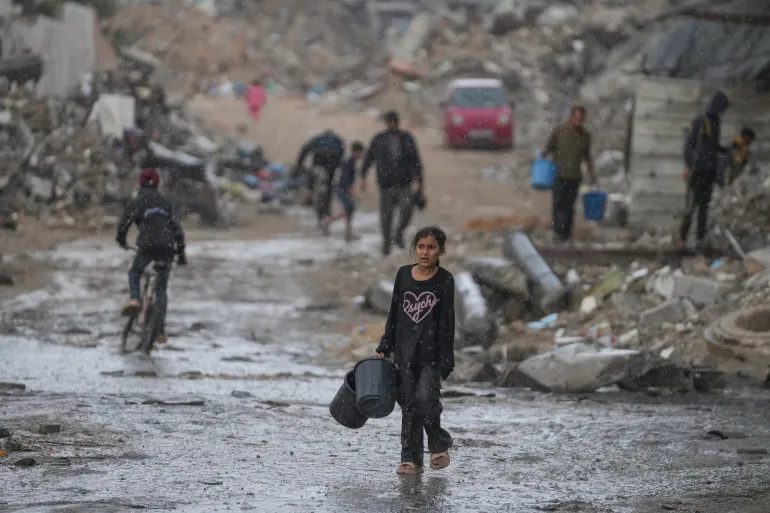Cairo has intensified diplomatic contacts with several Arab and Islamic states in recent hours to rally support for the US draft resolution on Gaza at the UN Security Council, according to Egyptian sources who described the effort as a “coordinated regional campaign” aimed at securing the resolution’s passage or, at minimum, building broad international backing for its core provisions tied to the Sharm el-Sheikh peace plan.
The push comes as harsh winter storms worsen conditions for the roughly 1.5 million displaced people in Gaza, now in the 36th day of a fragile ceasefire. Heavy rains and strong winds swept through makeshift camps across the enclave, flooding dozens of tents in Gaza City, the central region and Khan Younis. Gaza’s Civil Defense said it received numerous distress calls from families whose shelters had been inundated.
The Palestinian presidency called on the international community—especially the United States and the states guaranteeing the ceasefire—to pressure Israel to allow the entry of prefabricated homes, tents and essential shelter materials. It warned that the remaining tents in Gaza are torn, porous and unable to withstand rain, leaving children, women and the elderly in acute danger. The presidency accused Israel of continuing to impose restrictions that prevent the Palestinian government from providing adequate shelter assistance.
Hamas also appealed to the Arab League and the Organization of Islamic Cooperation to take a clear stance on what it described as the “worsening humanitarian catastrophe” in Gaza. Spokesman Hazem Qassem said residents “are experiencing a form of genocide even after the announcement of a ceasefire,” citing continued restrictions on aid, stalled reconstruction efforts and a prolonged blockade.
Gaza’s government media office said Israel has failed to comply with commitments to allow sufficient humanitarian aid into the enclave, permitting no more than 25% of agreed food and medical supplies and only about 10% of required fuel. It estimated that Gaza urgently needs at least 250,000 tents and 100,000 mobile homes as temporary shelter.
The UN Office for the Coordination of Humanitarian Affairs warned that unexploded ordnance remains widespread across Gaza, while around 16,500 people require medical treatment unavailable inside the enclave.
Meanwhile, The New York Times reported that US Middle East envoy Steve Witkoff is planning a meeting with senior Hamas official Khalil al-Hayya to discuss ceasefire arrangements and post-war issues, though no date has been set. Separately, CNN quoted two Israeli sources as saying the Trump administration is pressing Israel to accelerate progress on decisions regarding Hamas fighters in Rafah, including a previously floated proposal to relocate them to a third country.
These developments follow Israel’s recovery of all its living captives and most of the remains held by Hamas’s military wing, including the body of Colonel Asaf Hamami—one of the highest-ranking Israeli officers captured in Gaza. Analysts note that while the prisoner exchange is significant, it is the least complex element of the ceasefire, with far more contentious political issues ahead, particularly those related to Gaza’s future governance and broader Palestinian rights.
The Guardian reported that the United States is developing a new post-war framework for Gaza based on dividing the territory into two zones: a “green zone” under direct Israeli and international oversight where reconstruction could proceed, and a “red zone” subject to temporary security measures. Israel’s public broadcaster Kan said the Israeli army is preparing a plan to forcibly disarm Hamas if the US proposal fails to gain sufficient support at the Security Council.
Agence France-Presse reported that the Council is expected to vote on the US resolution on Monday, after Washington intensified lobbying efforts in the face of objections from Russia and China and a competing draft from Moscow.
The diplomatic momentum comes nearly two years after Israel launched its devastating military campaign on Gaza on October 8, 2023, which has left more than 69,000 Palestinians dead, over 170,000 wounded, and destroyed roughly 90% of civilian infrastructure, with estimated losses exceeding $70bn.
